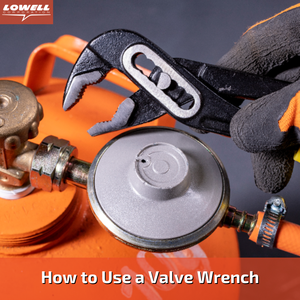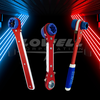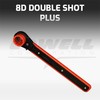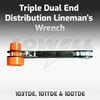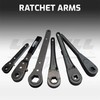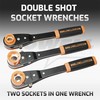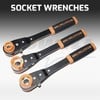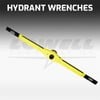Valve wrenches are indispensable tools that help you to tighten and loosen nuts, bolts, and valves. Valve wrenches have a hooked head to provide a powerful and non-slip grip to prevent the wrench from slipping when turning valves. They provide a mechanical advantage when working on fasteners.
Wrenches come in different sizes and shapes. The type of valve wrench you need will depend on the valve or rotary fastener you use.
Types of ValvesValves are mechanical devices attached to pipes that regulate, control, or deal with a fluid flow, such as water, air, and oil pipelines. There are several different kinds of valves available for pneumatic and hydraulic functions. Some of the types of valves are:
Air Logic ValvesThe air logic valve is also called the shuttle valve. Shuttle valves automatically open and close in response to the functional parameters of the valve. Air logic valves inject a degree of logic into a regulating system. The aerospace industry, automobiles, and mining applications are the most prominent users of air logic valves.
Balancing ValvesBalancing valves are for regulating and measuring the flow of fluids equally into numerous branches.
Cartridge ValvesAlso known as 2/2-way valves, cartridge valves regulate the direction and flow of pneumatic fluid power systems. They are hugely popular, and you can use them for different purposes.
Christmas Tree ValvesJust as the name implies, Christmas tree valves look like Christmas trees. They are a system of valves with many parts used to control products from a well. These valves mostly appear in offshore oil rigs.
Cock ValvesIn plumbing, cock valves also referred to as quarter-turn valves or plug valves, is a valve that drains tanks. It permits or restricts the flow of liquid or gas through a gas. They are often used in manufacturing plants, other industries, and residential settings.
